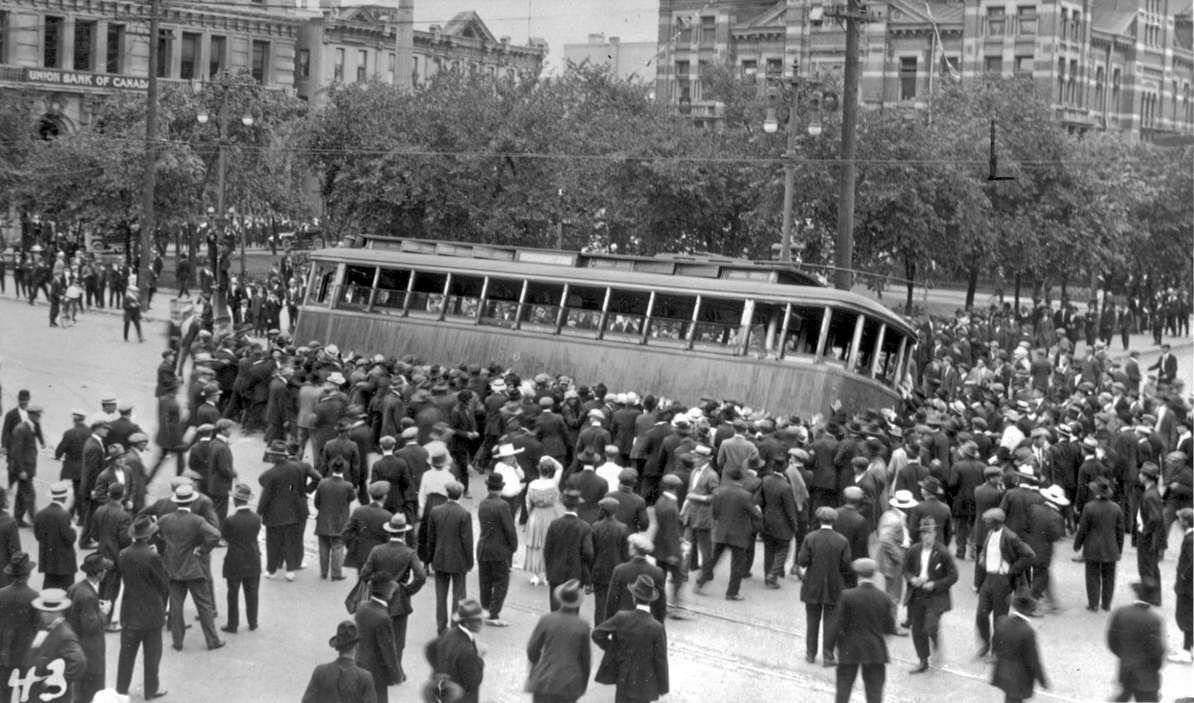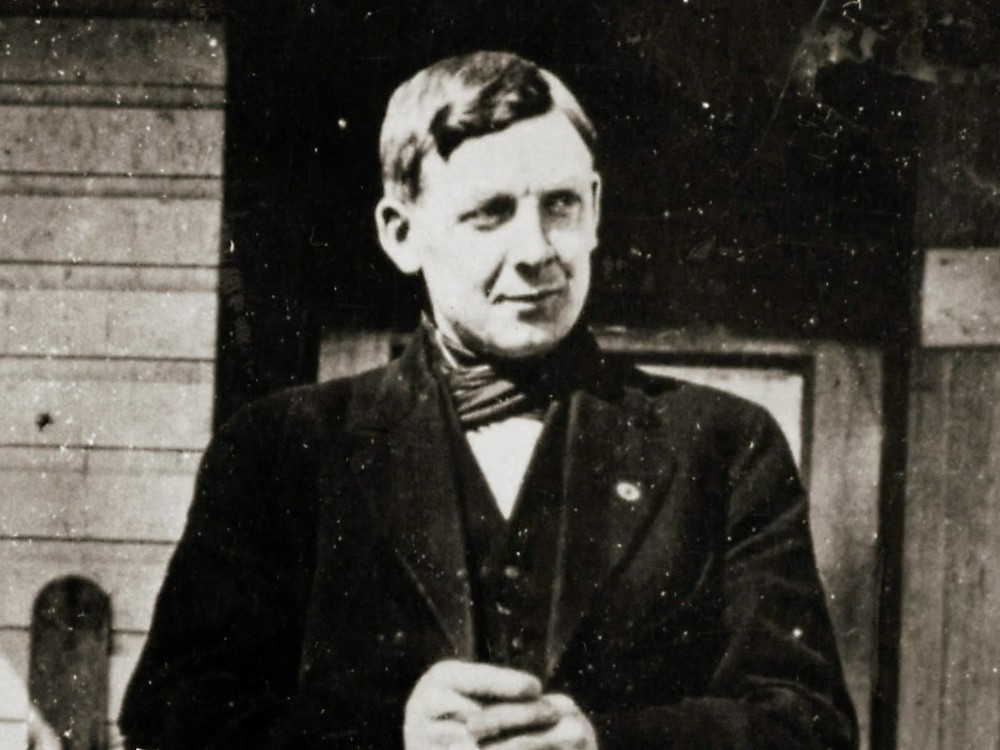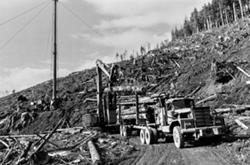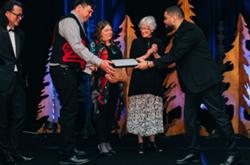One day in 1974 my pursuits as a historical researcher led me to a document from 1932 with names, addresses and profiles of about 900 alleged Communists in north Winnipeg — a tally prepared by the RCMP. There it was among papers related to former prime minister R.B. Bennett, whose term coincided with the first half of the Great Depression.
The list fascinated me because it included almost every home on the street where I had lived with my parents in the 1950s. Some whom the Mounties assessed were kindly grandmothers and grandfathers on my street or nearby. Yet here was the RCMP informant claiming one of them was a “free-love-advocating loudmouth who thinks she's the reincarnation of Rosa Luxemburg” while her lover and future husband was a shit-disturbing union organizer.
Such RCMP documents are plentiful because the RCMP spied on and infiltrated the Communist Party of Canada and sympathetic organizations after it was founded in 1921. While there were likely more members in Nazi and fascist organizations, and the Ku Klux Klan enrolled 15,000 members in Saskatchewan alone, the RCMP and the government saw no need to spy on members of the far right.
It wasn’t until the Second World War was declared that Prime Minister Mackenzie King ordered the RCMP to arrest leading Nazis and Fascists in Canada, and the force scrambled to determine what organizations and which people comprised the Canadian far right.
But it was much earlier that government targeted Communists and other members of the left who dared challenge the capitalist order through militant labour organizing and other means.
In fact, it can be argued that the original Cold War in the West — including spying and crackdowns on perceived “red menaces” within Canada — began in 1917 with the Russian Revolution.
Targeting socialists and ‘enemy aliens’
Suppression of workers’ movements predated the Russian revolt. But the Bolshevik takeover provoked a massive anti-socialist campaign that only let up briefly during the four-year period in the Second World War when the Soviet Union shifted to opposing the Axis powers.
Newspapers published in “enemy alien” languages, as well as Russian and Finnish, were shuttered, ethnic socialist organizations were banned along with the Industrial Workers of the World, and “aliens” who attended now illegal meetings of banned groups or who possessed reading material deemed subversive by the government’s censor were imprisoned in internment camps.
In 1918, a police constable shot and killed British Columbia Socialist and labour leader Ginger Goodwin in the woods by Comox Lake.
The Canadian government joined 12 other countries in sending troops in 1918 and 1919 to support efforts by the White Army, the pro-czarist-led, anti-communist Russian military, to crush the Russian Revolution. But many soldiers were unwilling Quebec conscripts. Many others were socialists who resisted fighting against a working-class revolution to aid enemies of the working class. The conscripts mutinied in Victoria on Dec. 21, 1918, but were forced into the fray anyway.
Strong resistance continued at home to Canadian troops being used to fight the Red Army. The recalcitrance of western troops, which included a mutiny of most of France’s combatants, and the unwillingness of Russians to support the anti-communist coup helped defeat the White Army. The western ruling classes faced huge labour revolts at home throughout 1919, which they blamed on Communist subversion while ignoring the hardships endured by working people as wartime employments disappeared without governments attempting to create postwar work.
In Canada, 1919 was the year when trade unionists of the four western provinces created the One Big Union, the Winnipeg General Strike shut down a large city and inspired sympathy strikes in many cities, and coal miners in the Crowsnest Pass region of southeastern British Columbia and southwestern Alberta fought a months-long strike.
The federal government repressed the Winnipeg General Strike violently. Strike leaders were jailed and charged with “sedition.” The Immigration Act was amended to bar entry to those deemed political threats to the Canadian order. Section 98 of the Criminal Code, passed that year, provided a vague definition of “unlawful associations” — organizations believed to counsel the use of force to gain their objectives. That led to eight leaders of the Communist Party of Canada receiving lengthy prison sentences during the Great Depression of the 1930s. Deportations of radicals without Canadian citizenship occurred in the 1920s and expanded to the thousands in the 1930s.

The immigration policies of the postwar period, as I’ve written in The Tyee, were racist and anti-communist, making it easy for a former Nazi volunteer soldier like Yaroslav Hunka to arrive here after Hitler’s defeat and start a new life. But it’s important to recognize that those policies were largely in place before the war.
An Immigration Act amendment in 1908 restricted immigration to people who could enter Canada via a single, continuous ship journey. That all but eliminated South Asians. Japan did have direct shipping connections to Canada but a gentlemen's agreement that year between the foreign ministers of Canada and Japan that year ensured that only a small number of Japanese would be allowed to emigrate to Canada each year. A few years later, after some American Blacks migrated to create farm communities on the Prairies, immigration agents were told to refuse any new Black entrants.
The Chinese Immigration Act of 1923 ushered more than two decades during which all but few dozen Chinese immigrants were denied entry to Canada. That year the Immigration Act created three categories of immigrants. Immigrants from northern Europe were “preferred immigrants”; central and eastern Europeans were “non-preferred” and allowed entry only for proven economic needs. The third category was the “special permit class,” which included southern Europeans, Turks and Jews, regardless of their home country. Special individual permission from the government was required for any member of this group wishing to migrate.
In 1931, as unemployment soared, the only “admissible immigrants” were self-supporting white Americans and British subjects along with agriculturists of some means. That excluded most Jews fleeing Nazism, though a small number had influential supporters in Canada who arranged to get them a permit.
Hitler, Stalin and Canadian Ukrainians
The rise of the Nazis was greeted blandly by the Canadian authorities and media. Mackenzie King, as historians have noted, described his get-together with Adolf Hitler in Berlin in 1937 in his diary in fawning terms. He was hardly alone among western leaders in regarding the German dictator positively. As Clement Leibovitz and I have documented in The Chamberlain-Hitler Collusion, the British prime ministers in the 1930s, especially Neville Chamberlain, were confident that Hitler would invade and conquer the Soviet Union, something the democracies had learned in 1919 that their own citizens refused to do.
What is often disingenuously called “appeasement” of Hitler was really collaboration. The British leaders were hardly pacifists looking to appease anyone, as their vicious suppression of the Indian independence movement in the interwar period showed. When Hitler came to power and vowed to ignore the Treaty of Versailles, which forbade German rearmament, Britain could have overthrown his government in a day when he first began to rearm. But a majority of the British Conservative Party welcomed an armed Germany supposedly bent on conquering the Soviets.
The minority in that party, led by Winston Churchill, who viewed Hitler as a threat to the British Empire, held sway only after the Second World War had begun.
In the United States, too, so-called “isolationists” were mostly pro-Nazi. Jacques Pauwels, in The Myth of the Good War: America in the Second World War, identifies many business leaders and elected politicians who sympathized with the Nazi cause.
Chamberlain dropped his view that he had an understanding with Hitler only when British intelligence, ironically much infiltrated by Communists, persuaded him in 1939 that the Nazis intended to attack in the West before attempting to take over central and eastern Europe. Events then unfolded that led to Britain declaring war on Germany after Germany invaded Poland. From 1934 through much of 1939, the Soviets orchestrated an effort to win a common front of the western democracies with the Soviet Union against Nazi Germany. That went nowhere because most western leaders regarded communism, not Nazism, as their enemy.
When Stalin then signed a non-aggression pact with Hitler that secretly divided central and eastern Europe between the two powers, western Communists were shocked but remained loyal to the Soviets. The Canadian government banned the Communists and attempted to minimize chances of their ever regrouping by creating the right-wing Ukrainian Canadian Committee and declaring its leaders the true spokespeople for Canadian Ukrainians, not the once-dominant Communist Ukrainians.
The UCC was an alliance of existing right-wing Ukrainian organizations that had all embraced fascist ideologies. The price they paid for Canadian state support was to declare support for Canada’s war effort against the Nazis. But after the war, their advocacy for those who had fought on the other side showed that they remained sympathetic to the European extreme right.
After the Nazis invaded the Soviet Union in June 1941, the western leaders agreed to include Stalin in the anti-Nazi Alliance. But even as the war was being fought, right-wing politicians in the United States and Britain prepared for a postwar period when the Soviets would again become the enemy of the western countries. Canada joined that campaign, reviving the Cold War it had already fought from 1917 to 1941.
Ripple effects
Echoes of the two Cold Wars reverberate in Canada to the present day.
In domestic terms, capitalist forces that were strengthened during the campaigns to suppress socialist movements led efforts to privatize and marginalize public services while brushing off calls for greater economic equality as Communist-inspired.
In foreign policy terms, we see Canada still largely walking in lockstep with the United States rather than pursuing an independent and more compassionate identity in global relations. There have been a few welcome exceptions such as Jean Chrétien's ultimately positive response to the mass movement that rejected Canada joining George Bush's "coalition of the willing" that invaded Iraq in 2003.
A failure to analyze closely as a nation our Cold War history allows us to pretend that Canada has been a force for unalloyed good in the world. It shields us from analyzing our long history of class, race and gender inequalities at home and our involvement in imperialist super-exploitation and dispossession abroad.
A better understanding of the seamy side of Canadian 20th-century history allows us to approach our country today, in terms of both domestic policies and global policies, with a far more critical eye that can help us to become a more independent, inclusive and caring nation within the global community. ![]()
Read more: Rights + Justice, Politics
















Tyee Commenting Guidelines
Comments that violate guidelines risk being deleted, and violations may result in a temporary or permanent user ban. Maintain the spirit of good conversation to stay in the discussion and be patient with moderators. Comments are reviewed regularly but not in real time.
Do:
Do not: